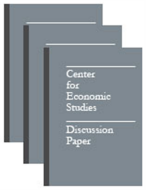Measuring The Trade Balance In Advanced Technology Products
Measuring The Trade Balance In Advanced Technology Products
Abstract
Because of the dramatic decline in the United States Trade Balance since the early 1970's, many economists and policy makers have become increasingly concerned about the ability of U.S. manufacturers to compete with foreign producers. Initially concern was limited to a few basic industries such as shoes, clothing, and steel; but more recently foreign producers have been effectively competing with U.S. manufacturers in automobiles, electronics, and other consumer products. It now seems that foreign producers are even challenging the dominance of America in high technology industries. The most recent publication from the International Trade Administration shows that the U.S. Trade Balance in high technology industries fell from a $24 billion surplus in 1982, to a $2.6 billion deficit in 1986, before rebounding to a $591 million surplus in 1987. As part of the efforts of the U.S. Census Bureau to provide policy makers and other interested parties with the most complete and accurate information possible, we recently completed a review of the methodology and data used to construct trade statistics in the area of high technology trade. Our findings suggest that the statistics presented by the International Trade Administration, although technically correct, do not provide an accurate picture of international trade in high or advanced technology products because of the level of aggregation used in their construction. The ITA statistics are based on the Department of Commerce's DOC3 definition of high technology industries. The DOC3 definition requires that each product classified in a high tech industry be designated high tech. As a result, many products which would not individually be considered high tech are included in the statistics. After developing a disaggregate, product- based measure of international trade in Advanced Technology Products (ATP), we find that although the trade balance in these products did decline over the 1982-1987 period, the decline is much smaller (about $5 billion) than reported by ITA (approximately $24 billion). This paper discusses the methodology used to define the ATP measure, contrasts it to the DOC3 measure, and provides a comparison of the resulting statistics. After discussing alternative approaches to identifying advanced technology products, Section 2 describes the advanced technologies in the classification. (Appendix A, provides definitions and examples of the products which embody these technologies. In addition, Appendix B, available on request, provides a comprehensive list of Advanced Technology Products by technology grouping.) Having described the ATPs, Section 3 examines annual trade statistics for ATP products, in 1982, 1986, and 1987, and compares these statistics with equivalent ones based on the DOC3 measure. The differences between the two measures over the 1982- 87 period stem from changes in the balance of trade of items included in the DOC3 measure but excluded by the Census ATP measure; i.e. the differences are due to changes in the trade balance of "low tech" products which are produced in "high tech" industries. This finding corroborates a principal argument for construction of the ATP measure, that the weakness of the DOC3 measure of high technology trade is the level of aggregation used in its construction. It also suggests that at the level of individual products the high technology sectors of the economy continue to enjoy a strong comparative advantage and are surprisingly healthy. Nonetheless, some areas of weakness are identified, such as low tech products in high tech industries. (Appendix C, supplements this material by providing a detailed listing of traded products included and excluded from the Advanced Technology definition for each DOC3 high tech commodity grouping. These Tables enable the reader to directly assess the Census classification.)




